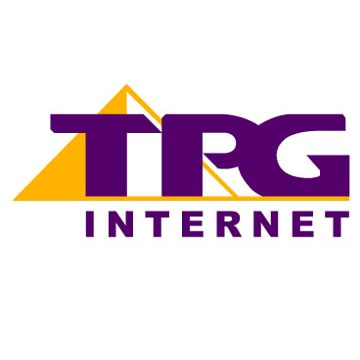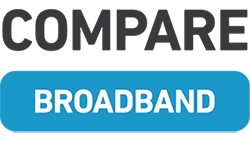- TPG and Optus battle for #2
- Each targets different customer types
- Different approaches, but both offer innovative pricing models
Optus and TPG plans don’t share a great deal in common, at first blush. Optus broadband competes in the premium end of the market with Telstra and iiNet/Internode. TPG competes with low-cost providers like Dodo and Exetel. So why compare the two?
For starters, comparing TPG to other ‘cheap and cheerful’ ISPs charging the same amount is not fair. TPG runs basic, text-based ads, offers seemingly impossible deals on unlimited broadband, and their website has no blog or other friendly bits and pieces. Their customer service is mostly based offshore, and their plans have a basic ‘like it or lump it’ quality that matches other small-time providers. But the difference is that TPG doesn’t just take those savings and bank them. TPG is the one provider that treats broadband as the un-sexy utility that many people perceive it to be and invests heavily in making sure that its infrastructure WORKS; here’s a tap, and the internet is going to come out of it. So while TPG has a cheap weatherboard frontage, inside its marble and polished wood.
Optus, on the other hand, is high class throughout. Its public image conveys a dynamic but also family-friendly provider – a safe company that will be around for a long time. They have mobile towers, interstate networks, and cable networks. Their name can be seen on the occasional street post near cable trenches. Optus is the largest telco in Australia built from the ground up – Telstra maybe twice the size, but much of its strength comes from the control of the system it inherited. Optus inherited some satellites; everything else was built in the last 20 years.
The reason why TPG and Optus offer a stark basis for comparison is this – TPG is the cold, hard face of competition. Optus is cuddlier but was specifically built to be the competition. Which one actually offers better value for the end-user?

What TPG does right
First, there was the landline telephone. Everyone had one. After that, everyone got a mobile. But they kept the telephone around because mobile calls were prohibitively expensive.
Then everyone got ADSL. The telephone line can provide ADSL because it contains two copper wires – and ADSL simply activates a digital internet connection on the line not being used for the telephone. So phone + internet was a natural bundle; everyone had a landline, so activating ADSL was a natural progression, and it was natural to bundle the services with one provider.
Then came mobile cap plans, offering oodles of credit for a low monthly fee. Everyone stopped using their landline, or did not bother to connect it at a new address at all.
This is where TPG comes in. TPG recognises that many people don’t want a home phone at all, but DO want a reliably fast and plentiful broadband connection. The technological (and economic) reality is more complicated – you MUST have a landline connection to get ADSL. You MUST pay line rental to rent that line for ADSL – whether you use the associated phone service or not. There’s Naked DSL, which supposedly offers this – but not really. All Naked DSL does is offer broadband and line rental wrapped in one price, with no home phone service – it’s not cheaper, and in fact, it’s usually more expensive. It’s also harder for an ISP to arrange, for a whole host of reasons.
So TPG stripped away most of the unnecessary baggage that comes with line rental and phone, to cut down on price. Some of your line rentals pay for a battery backup of your line, to provide a dial tone even when there’s a general power outage. But most people have mobiles, so let’s take out that charge.
Some of your line rental goes towards Telstra’s Customer Service Guarantee. This is a guarantee on major line repairs. If your line goes down, you can claim back a portion of your line rental for the time it takes to repair it. In reality, this happens very rarely and rarely takes more than 3 or 4 days to repair. So if line rental is about $30 a month, and your service is down for 4 days, then the rebate you can claim back is around…$4. For this, you pay a lot for standard line rental.
Part of your line rental pays for compatibility with services like Priority Assist, Faxstream Duet (fax line), back-to-base alarm system, and other ‘dial-back’ services that use the landline to make automated connections. Not gonna miss them? Good, because TPG stripped that away too.
So TPG got rid of all of this, leaving just the most basic line rental, and reducing the cost to customers who don’t need the line for the phone – they just need the line for broadband. As for the Unlimited data part – TPG can do that because they don’t rely on Telstra or Optus for ‘backhaul’ like everyone else. They have their own undersea fibre optic cable connecting Australia to Guam, which is, in turn, a central switching point for direct connections to the USA, Europe, and Asia. TPG is, with Telstra and Optus, the only other ‘inter’ internet provider.
In addition – TPG realises that most people are tired of 24-month contracts. Long contracts are an insurance policy for telecommunications companies, a tacit admission that their network and customer service are going to disappoint eventually, but in order to keep you on their books, they can use contracts to lock you in. This is expensive. It means that an ISP has to offer freebies, like free connections and free modems. It also means that your average telco has a bunch of customers that are both unhappy with their service, and vengeful over their telco’s inflexibility. Those customers are in a hurry to leave when their contract is up – not just to get a better deal, but to also ‘get back’ at their old ISP. That’s Bad Mojo.
TPG limits most of their plans to 6 or 12 months, charging upfront for connections and modems, or relying on the fact that by now, many people already have a compatible modem. That way, if you’re not happy with your service, at least you won’t be shackled to TPG and build resentment against them – they then have a better chance of winning you back later, once their network improves.
So what TPG does right is it offers unlimited data on a fully-backed international connection, for the lowest price, and under the fairest terms. Their phone offerings are pretty basic – Telstra rates for calls, unlimited local calls, standard national calls, national calls to mobile, and 100 international minutes to boot. And that’s it. Otherwise, you can even steer clear of having a phone line, particularly if NBN is already rolled out in your area. It’s like buying the full Happy Meal because just buying a cheeseburger and coke would be more expensive. TPG could run an obscure ad campaign with: “TPG. Just Throw Away The Fries”. Only I would get it, but that doesn’t mean it doesn’t make some sense.
TPG NBN plans
TPG is an Australian telecommunication and ISP provider that offers a range of NBN plans. The company has been in operation since 1992 and is headquartered in Sydney. In terms of its NBN offerings, TPG provides several different speed tiers to choose from, as well as unlimited data allowances on all plans. For instance, its entry-level NBN 25 plan offers speeds of up to 25Mbps, while its top-tier NBN 100 plan provides speeds of up to 100Mbps. In addition, TPG also offers a range of extras with its plans. This makes it a great option for those who want to make the most of their NBN connection.
TPG also offers many other features with its plans, such as free installation and a free modem. The free installation often comes as a godsend for those who are unfamiliar with how to set up an NBN connection. TPG also offers a 30-day money-back guarantee, so you can try out the service risk-free. The company also has a no-contract option, which is great for those who don't want to be locked into a long-term contract. Overall, TPG is a great option for those who are looking for an NBN plan in Australia.
What Optus Does Right
Optus has to have a different profile. Its customers and shareholders have invested in a top-tier provider, a company whose very existence depends on you not wanting to be with Telstra. But that also means they have to offer a version of everything Telstra does, to appeal to the broadest range of customers possible.
That said, Optus makes a go of meeting the actual demands of the market. It has jumped into the Naked Broadband waters, realising that it wasn’t going to make its money on the home phone. It has concentrated on mobile, offering Timeless plans that come with unlimited calls, text, and lots of data, while still offering the latest handsets. They have embraced prepaid. But most importantly, they have embraced a new role as the Telstra of mobile.
Optus has a big mobile network. Not only does it have thousands of towers and antennas over the Aussie landscape, they also have international connection points thanks to them being owned by SingTel, a Singaporean telecoms giant that dwarfs Telstra. Without getting too technical, Optus’ foreign connection does provide it with a lot more scale for providing wholesale mobile and mobile broadband access.
So what Optus does right is use their size and scope to play two different games- offering a family-friendly, comprehensive, top-tier experience to those willing to pay for it, while also using their wholesale network to effectively capture the more savvy customers who know what they want. In turn, ideas that are successful in the wider marketplace can get incorporated into Optus’ own stable of products. Case in point – Optus now has unlimited mobile plans, mobile broadband plans, as well as NBN plans in various speed tiers. These are the product offerings of a small and innovative company, not a big behemoth.
Optus NBN plans
Optus offers some of the fastest and most reliable NBN plans in Australia. It has a wide range of speeds to choose from, and its prices are very competitive. For instance, you can go for its top speed of 100Mbps for just $90 per month. And if you need even more speed, you can get a plan with speeds up to 1000Mbps for only $140 per month. Plus, all Optus NBN plans come with unlimited data, so you can stream and download as much as you want.
Optus also offers several extras, such as free installation and activation, unlimited data, and free email and phone support. Free installation would prove to be beneficial for those who are not familiar with how to set up an NBN connection. And for those who need help, they can always rely on Optus' world-class customer support.
When it comes to NBN plans, Optus has something for everyone. Whether you need a fast and reliable connection for gaming or streaming, or you just want an affordable and hassle-free plan, Optus has got you covered. So, if you're in the market for a new NBN plan, be sure to check out what Optus has to offer. You might just be surprised at how good it is. Overall, Optus is a great choice for an NBN provider.
Plan Comparison
TPG’s best value plan, for people who are living in an area where NBN is already available, is their $69.99 NBN 50 Standard Plus Unlimited Data. As stated, this provides unlimited data on a no lock-in contract term. The total connection charges come to $99.95, with a modem included – but you can waive the connection charges in case you go for a 6-month contract.
In addition to this, you can also get a Fetch Mighty PVR for an extra $20 per month. This will give you the ability to record, pause and rewind live TV, as well as access free-to-air catch-up TV services. If you want premium channels, you can add them to your plan for an additional $15 per month.
Optus provides the Optus Internet Everyday NBN 50 plan. For $79, you get unlimited data. It’s a decent plan for medium users who want the least amount of fuss possible and comes with a Wi-Fi modem. The total connection fee comes to $99, under a no-contract term. You even get a 4G backup in case your NBN connection fails.
With Optus, you can also choose to subscribe to a plan with a higher speed tier to suit your needs. Prices for these plans start at $89 per month for the Optus Internet Everyday NBN 100 plan and go up to $129 per month for the Optus Internet Everyday NBN 250 plan.
Conclusion
TPG’s best value plans now cater to the different speed tiers of the NBN network. Optus’ best value plans are their mobile offerings in parallel to their NBN plans – but both offer good alternatives. When broken down, their prices actually come out similar, with Optus usually needing less cash upfront and offering a wider range of payment options. But both companies are taking chances and offering innovative solutions, while still maintaining deep networks.


